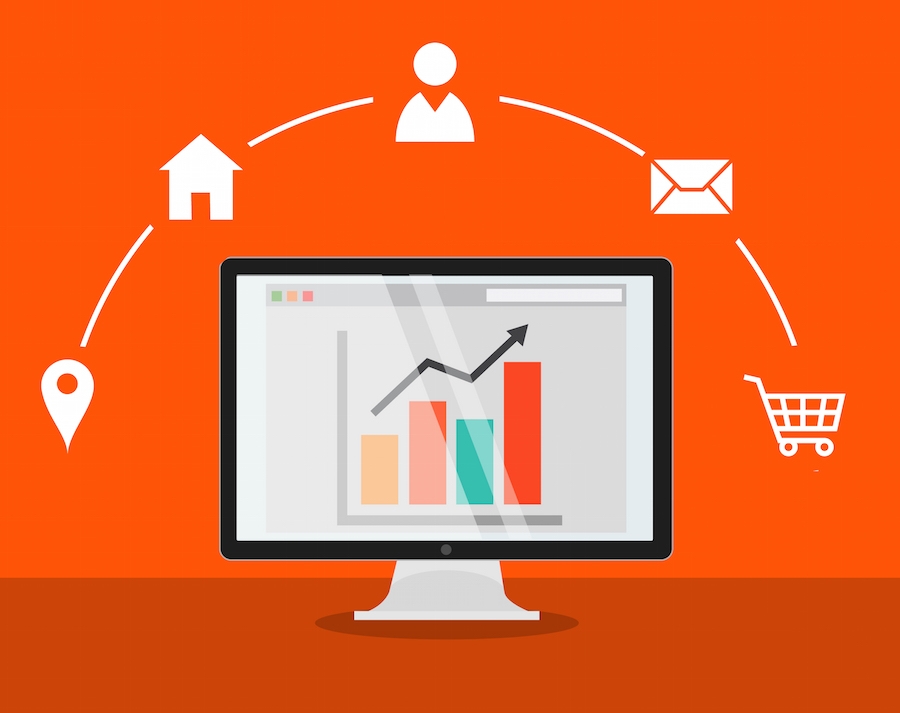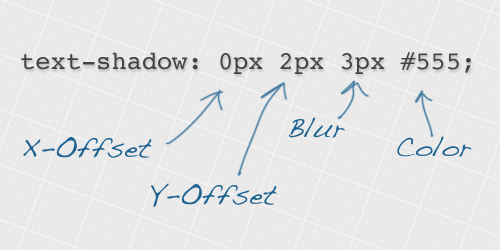Shopify’s popularity has exploded in recent years. It’s currently being used by over 1.7+ million businesses across 175+ countries worldwide. Arguably the biggest draw of Shopify is its simplicity. It has everything you need to create an eCommerce site from scratch—no technical experience required. So you don’t need to hire a developer or design team to launch and maintain your site. If you’re already using Shopify to sell online, I’m sure you already know this. But don’t confuse this simplicity for lack of functionality. With Shopify Plus, you’re not stuck with a cookie-cutter eCommerce solution. It’s time to ditch the basic templates and rigid functionality. Those features might be fine for a small business or side-hustle. But they won’t accommodate the needs of a global eCommerce company. I’ll share my favorite Shopify Plus agency secrets that you can replicate and apply to your website.
This enterprise-grade platform gives you tons of flexibility in terms of shopify design and development. It’s just a matter of learning how to get the most out of Shopify Plus and its capabilities.
If you’re ready to take your Shopify store to the next level, this guide is for you.
1. Checkout SDK
Payment gateways are crucial for every eCommerce site. Many popular payment gateways can easily be integrated with your checkout page. But with Shopify, you can use the checkout SDK to build a custom payment gateway for your website.
Also known as Shopify’s hosted payment SDK, this function will connect your hosted payment page to every checkout implemented via Shopify.
You can use this to create a full-page redirect during the final stage of your checkout process. This provides site visitors with a simplified interface for different third-party gateways. By leveraging predefined values, the SDK will automatically send your customers to a page that you’ve created. Once the payment is completed, they’ll be redirected back to Shopify, where all of the order information will be visible.
To get started here, head to the “Gateways” menu of your Shopify admin dashboard and select “Create Gateway.”
You’ll be prompted to fill out form fields with information like:
- Gateway Name
- Gateway Website
- Gateway Logo
- Gateway Category
- Login Label
- Password Label
- Redirect URL
- Sandbox URL
- Payment Types
- Countries Served
Once this process is complete, it’s just a matter of publishing the gateway and getting it activated on your Shopify site.
This is somewhat of a technical process and should be handled by a developer. Things tend to get a bit more complex when you want to add functions for order management, refunds, voiding payments, and other custom options for your new gateway.
So if you don’t have someone in-house who understands how this works, it’s in your best interest to consult with a Shopify Plus agency.
2. Customization Capabilities
As previously mentioned, Shopify has tons of great functions offered out-of-the-box. Within those pre-built features, there’s definitely room for some customized options. But Shopify Plus takes these custom capabilities to a whole new level.
You’ll be able to control every aspect of your online store and checkout page with Shopify’s intuitive editing tool. For advanced customizations, Shopify Plus grants you access to the code directly. A quick word of caution here—I don’t recommend messing around with the code of your site if you don’t have development experience. Make sure a developer is doing this for you.
Shopify’s APIs and SDKs let you turn any device into a digital storefront. You can drive more conversions by customizing digital wallets, subscriptions, and custom discount logic as well.
Shopify Plus gives you innovative tools to transform your product pages. You can add features like augmented reality, 3D products, and videos to give your customers a true representation of what you’re selling.
Here’s a glimpse of what AR-shopping looks like on the consumer side:
This functionality solves one of the biggest problems with online shopping—the inability to see, touch, and feel a product. In fact, 82% of customers say they like to view products in-store before buying them online.
But AR, 3D products, and videos make them feel more comfortable about their purchases. This increases buyer confidence, and the results speak for themselves.
71% of consumers say that they would shop more often if they could do so with AR. An additional 62% of survey respondents say they prefer buying from online retailers using this type of technology in the checkout process.
That’s not all. 40% of consumers admit they’d pay more for a product if they had the opportunity to customize it with AR.
So don’t look at these types of customizable options as a gimmick or just a nice-to-have feature. Shopify Plus custom capabilities can really drive conversions and make a significant impact on your business.
3. API Integrations
Shopify’s API gives developers the ability to improve and extend the existing features that already exist within the platform. This gives you far more control over the user experience and how your site communicates with other platforms.
These integrations are crucial for streamlining the efficiency and management of your website.
Enterprise-size eCommerce sites can leverage APIs to simplify the customer journey and ensure a smooth checkout process. That’s why the API library offered by Shopify is so popular in the developer community.
Some of the popular Shopify APIs include:
- Discount API — Shopify already has discount code functionality built into the platform, but the discount API is far more advanced. Shopify Plus merchants can use this to quickly create, enable, or disable codes in real-time. You can even set this up to automatically trigger custom discount codes based on consumer behavior.
- Multipass API — The multipass API can best be described using an example. Let’s say you have run an external forum, and you want to let those forum users purchase products from your Shopify site through a separate store. The multipass API lets you integrate those forum profiles with Shopify customer profiles. This creates a seamless user experience and eliminates the need for users on an external database to create two accounts or manage two separate logins.
- Gift Card API — Gift cards are fairly self-explanatory. They can be used in the traditional sense of the term, as well as an option for store credits. But the gift card API goes beyond the ability to create, modify, and disable gift cards. It’s a must-have feature if you’re migrating your existing eCommerce platform to Shopify and you need gift card balances to migrate as well. This wouldn’t be possible without the API.
- User API — The user API isn’t as commonly used, but it allows you to customize the info associated with administrators and other users who manage your site. It’s ideal for creating a private app or customizing the way information is organized on the back end.
- API Call Limits — Like many business SaaS solutions, Shopify uses an algorithm known as the “leaky bucket” to manage API calls. The API documentation has a 40-call limit per bucket, with a two-call per second leak rate. This isn’t a perfect system and can trip 429 errors for a bucket overflow. Shopify Plus merchants can increase the call limit for private apps, which is crucial for those of you who need to migrate large quantities of data to Shopify. For example, if you’re migrating 10,000+ products to your site, you’d definitely want to take advantage of this API.
As you can see, many of these APIs are useful during migrations. If you fall into one of these categories, check out our eCommerce migration services. Our team at Optimum7 will help ensure a smooth transition to Shopify.
Ultimately, these APIs give developers the opportunity to experiment, get creative, and make changes to your site with ease. You can use the APIs to connect your storefront with an existing CMS, ERP, IMS, or OMS solution as well.
4. Custom Apps
Shopify gives you access to more than 6,600+ apps in the platform’s app store. This number is continuing to grow on a seemingly daily basis. I remember not too long ago when the number was at 3,000 and then quickly jumped to 5,000.
These apps are being built by nearly 200 certified Shopify Plus partners.
So not only can you add these applications to your Shopify site, but you can also use the Shopify API to create customized apps on your own. The platform has all of the developer tools you need to get started here.
In most cases, it’s in your best interest to leverage existing solutions functions that accommodate your needs. But once you reach the midsize to enterprise-level, your needs typically involve a higher level of customization.
A simple plug-and-play app won’t always get the job done. That’s when the need for a custom Shopify app comes into play.
If you have highly specific needs or pain points that aren’t being addressed with out-of-the-box functions, consult with our expert team of professionals here at Optimum7. We can come up with a solution and even develop that solution for you in the form of a custom Shopify app.
The possibilities here are seemingly endless. They can be used for customer-facing features as well as backend management functions. Maybe you need a solution for inventory automation, re-ordering, or custom integration with a supplier.
Since the app will be tailored to meet the exact specifications of your unique organization, you won’t have to worry about changing your existing system to accommodate the app. You can leave everything else in place, and the app will conform to fit within your workflow and business processes.
5. Site and Page Speed
Shopify Plus comes with unlimited bandwidth and web hosting included in your subscription. You’ll also have access to a global CDN and cloud-based infrastructure. These global servers are lightning-fast, and you’ll benefit from automatic platform updates as well.
With the use of dual CDNs, Shopify ensures fast page loading speeds—regardless of your customer’s location. This is crucial for those of you who run a global eCommerce site.
Customers in Miami, Rome, and Hong Kong will all be able to navigate and buy from your site without delays.
Shopify’s storefront renderer also helps reduce your storefront response times. You can take advantage of tools like SCSS.liquid minification and WebP image conversions as well. You’ll also have access to Shop Pay, which can increase your checkout speeds by up to 60%.
Any delay on your website could be costing you conversions and customers. Shopify has an excellent resource on page speed and how it impacts your eCommerce site.
Here at Optimum7, we take page speed very seriously. So you can request a consultation with one of our experts to see what can be improved on your site.
We also offer custom solutions like product page load time optimizers. This ensures that your product pages still load quickly, even if you have hundreds or thousands of products on the page.
That’s one of the many benefits of working with a top Shopify Plus agency.
6. ERP and Inventory Management Options
Shopify has plenty of built-in inventory management tools. But this gets tough to manage when you factor in omnichannel sales, multi-location sales, multi-vendor ordering, and more.
This is also complex for demand planning and product information management. Basic inventory solutions alone won’t be enough to truly maximize inventory efficiencies. At scale, getting this wrong can be extremely costly.
But Shopify Plus caters to larger organizations with enterprise resource planning integrations.
Many of you might already be using an ERP solution to make data-driven decisions. But the ERP is only as good as the information in your database. So you’ll want to make sure it encompasses everything, including:
- Product data
- Customer data
- Supplier data
- Shipping data
- Inventory data
- Payment data
The list goes on and on. Without ERP solutions, it would be impossible to understand tens of thousands or hundreds of thousands of data points. These systems make it easier for your decision-makers to see what’s happening through various reports.
For example, you could see how well certain products are performing and the costs associated with that performance.
7. Headless Shopify Plus Implementation
Headless Shopify has become a popular buzzword in recent years.
In simple terms, this is an eCommerce architecture where the front end and back end of an eCommerce platform are separated. So your product display or CMS can be on one platform, and your checkout solution can be on another platform.
With your back-end infrastructure separated from the customer-facing touchpoints, you can create new selling opportunities from anywhere. All of this can be accomplished through a single centralized location.
For example, maybe you want to create a progressive web app (PWA) in addition to your eCommerce site and traditional mobile application. Or maybe you want to take advantage of omnichannel sales from a single backend dashboard.
Headless commerce even allows you to publish new content updates on all of your storefronts using your existing CMS. So the possibilities here are extremely flexible.
This really bridges the gap between developers and designers, as headless commerce allows you to create brand-consistent experiences throughout every touchpoint. It gives both developers and designers alike the freedom to work from the tools they’re comfortable using without sacrificing the end-user experience.
8. Search Engine Optimization Capabilities
SEO isn’t one of Shopify’s top selling points. But believe it or not, Shopify Plus is great for SEO.
Let’s take a closer look at some of the top reasons why this is the case and how Shopify Plus has an edge over other eCommerce solutions.
One of the obvious reasons is the app marketplace. You can install apps and plugins that are SEO-focused.
We already touched on site speed earlier in this guide, and this is something that goes hand-in-hand with SEO. Google loves fast loading times, giving you a boost in the SERPs. But this also leads to fewer bounces, repeat visitors, increased traffic, and longer time spent on your site—all of this can also improve your SEO strategy in a positive way.
You can even use product descriptions and meta descriptions within Shopify Plus for SEO purposes. Structured data like SKU numbers, product descriptions, pricing information, and reviews are also crucial for SEO.
Shopify Plus can integrate directly with Google Analytics. So you can get tons of vital information about your traffic and unique visitors.
You can also use Shopify to submit your sitemap directly to Google. By doing this, it’s easier for Google to index your pages and optimize that content for the SERPs.
9. Advanced Faceted Search and Filter Based on Logic
Faceted search is crucial for large-scale eCommerce operations. It allows you to organize products based on factors like color, size, price, category, and more.
Without advanced faceted search and filter, it can be difficult for consumers to find what they’re looking for on your website.
Depending on the size of your site, a simple search could yield hundreds or thousands of results. That’s not useful for customers shopping for something specific—there’s no way they’re going to scroll through all of those products. Plus, you don’t want to rely on them searching for something ultra-specific, as that type of search may not yield any results.
For example, let’s say you sell clothes online via Shopify Plus. A customer searches for something basic, like a “shirt.” The initial result may display 2,500+ products.
But with advanced faceted search and filters, the customer could easily narrow down the options by applying parameters blue color, medium size, short sleeves, and v-neck. Maybe they want to narrow the results even more by applying a filter for the fabric, like cotton or polyester.
There are some apps in the Shopify marketplace that offer this type of advanced functionality. Alternatively, you can create a custom faceted search function that’s specifically designed for your site.
Check out this recent article I wrote that explains faceted search and filter for Shopify in greater detail.
Final Thoughts
Shopify Plus is one of the most powerful eCommerce solutions on the market. You just need to understand its development and design capabilities to get the most out of this platform.
If you have an in-house team of developers and designers, you can take this guide and apply the concepts on your own. But if not, it’s in your best interest to work directly with one of the best eCommerce marketing and development agencies.
Here at Optimum7, we have an experienced team of developers, designers, strategists, designers, and marketers with decades of experience working with enterprise eCommerce operations.
We can help you with your checkout SDK, custom APIs, custom apps, ERP integrations, data migrations, headless commerce deployment, SEO, site speed, everything else mentioned in this guide, and so much more. Schedule your consultation today to get started.




